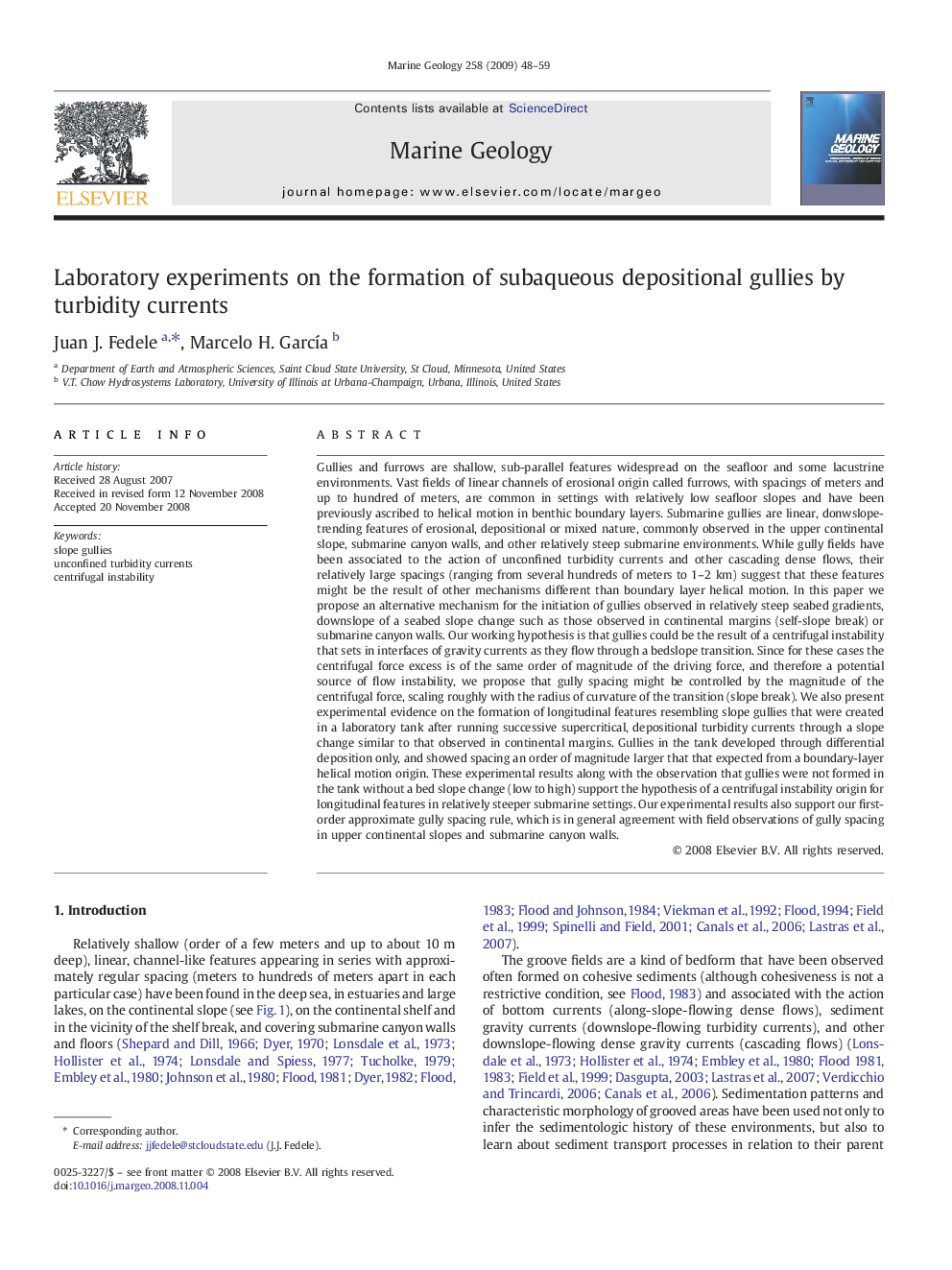| کد مقاله | کد نشریه | سال انتشار | مقاله انگلیسی | نسخه تمام متن |
|---|---|---|---|---|
| 4719202 | 1639168 | 2009 | 12 صفحه PDF | دانلود رایگان |

Gullies and furrows are shallow, sub-parallel features widespread on the seafloor and some lacustrine environments. Vast fields of linear channels of erosional origin called furrows, with spacings of meters and up to hundred of meters, are common in settings with relatively low seafloor slopes and have been previously ascribed to helical motion in benthic boundary layers. Submarine gullies are linear, donwslope-trending features of erosional, depositional or mixed nature, commonly observed in the upper continental slope, submarine canyon walls, and other relatively steep submarine environments. While gully fields have been associated to the action of unconfined turbidity currents and other cascading dense flows, their relatively large spacings (ranging from several hundreds of meters to 1–2 km) suggest that these features might be the result of other mechanisms different than boundary layer helical motion. In this paper we propose an alternative mechanism for the initiation of gullies observed in relatively steep seabed gradients, downslope of a seabed slope change such as those observed in continental margins (self-slope break) or submarine canyon walls. Our working hypothesis is that gullies could be the result of a centrifugal instability that sets in interfaces of gravity currents as they flow through a bedslope transition. Since for these cases the centrifugal force excess is of the same order of magnitude of the driving force, and therefore a potential source of flow instability, we propose that gully spacing might be controlled by the magnitude of the centrifugal force, scaling roughly with the radius of curvature of the transition (slope break). We also present experimental evidence on the formation of longitudinal features resembling slope gullies that were created in a laboratory tank after running successive supercritical, depositional turbidity currents through a slope change similar to that observed in continental margins. Gullies in the tank developed through differential deposition only, and showed spacing an order of magnitude larger that that expected from a boundary-layer helical motion origin. These experimental results along with the observation that gullies were not formed in the tank without a bed slope change (low to high) support the hypothesis of a centrifugal instability origin for longitudinal features in relatively steeper submarine settings. Our experimental results also support our first-order approximate gully spacing rule, which is in general agreement with field observations of gully spacing in upper continental slopes and submarine canyon walls.
Journal: Marine Geology - Volume 258, Issues 1–4, 15 March 2009, Pages 48–59